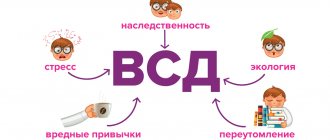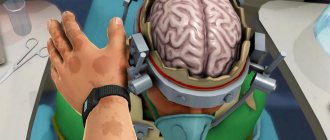- home
- A verticalizer for a child with cerebral palsy. Importance of use?
All babies require close attention and care from adults, but children with cerebral palsy (CP), whose development occurs in a special way, need such attention several times more.
Compensation for physical development disorders plays an important role in the competent rehabilitation of children with cerebral palsy. For this purpose, a verticalizer is used - a device that helps keep the body in an upright position.
A correctly chosen verticalizer is the key to a good result when using it, helps in the treatment of cerebral palsy, improves the general condition of the child and allows him to acquire new skills and abilities.
Existing types of verticalizers
Let's look at the types of verticalizers on the market.
A device in which the patient has support on the stomach is especially common and is called anterior. Designed for patients without problems with holding their head.
The second type is intended for people with a weakened spine and severe disorders of the musculoskeletal system. The verticalizer with reverse support (rear) is additionally equipped with a mechanism for gradually moving a person from a lying position to a vertical one.
Multi-level devices allow the patient to occupy several positions - sitting, upright, lying down, without changing the rehabilitation device.
Static verticalizers are intended for those unable to move independently. Equipped with wheels designed to help caregivers move short distances in an upright position.
Mobile, on the contrary, is designed for independent movement in a standing position.
The mobile verticalizer allows you not only to move, but also to train your leg muscles by moving levers with your hands, which are mechanically connected to your feet.
MODEL OVERVIEW
Patients with central paresis and paralysis (i.e. with brain damage): cerebral palsy, consequences of head injury, consequences of hydrocephalus, etc., cannot be placed directly vertically, they must be verticalized with an inclination - either backwards or forwards. If it is possible to place a patient, even with severe pathology, in a forward-supporting position, this must be done, despite the fact that it is much more convenient and easier to verticalize the patient into a posterior-supporting verticalizer - a table. The front-support stand makes it convenient to verticalize disabled people with a pronounced inclination, which is important for patients with problematic hip joints when it is impossible to put a full weight load on their legs. If you verticalize the patient in a posterior support stand with such an inclination, then he will lie on the support, without stimulation for motor activity, many even sleep in this position.
Front tilt verticalizer (tilt stand) Rifton allows you to take advantage of the weight load in a vertical position, facing the support. Adjustable support elements help ensure correct positioning of the torso and lower limbs. The board can be tilted from vertical to horizontal using a handle. The tray table has enough space for educational and gaming materials, as well as food. The tray can maintain a horizontal level regardless of the angle of inclination of the stand, or it can be specifically tilted.
Stander and user dimensions
| User size, cm | Small | Average | Big |
| Height | 64-122 | 112-150 | 145-183 |
| The key parameter is user height . Choose a model, taking into account how the child will grow. Important: The user's weight should not exceed the maximum permissible load. | |||
| Product dimensions, cm | Small | Average | Big |
| Board length | 60- 41 without knee board | 76 | 99 |
| Board width (top/bottom) | 32/32 | 28/41 | 38/48 |
| From the top of the board to the footrest | 46-89 | 84-110 | 105-138 |
| Horizontal height | 75 | 75 | 80 |
| Vertical height | 98 | 116 | 152 |
| Distance between side blocks | 20-41 | 20-41 | 30-56 |
| Base width | 61 | 66 | 76 |
| Base length | 89 | 99 | 109 |
| Inner tray width (at widest point) | 57 | 57 | 75 |
| Inner tray length | 44 | 44 | 44 |
| Maximum load, kg | 45 | 68 | 91 |
The Rifton front tilt verticalizer (including all components) is manufactured and assembled by hand at the company's factories in New York and Pennsylvania (USA).
Correct selection of device
Only a specialist doctor can give the correct recommendations on choosing a verticalizer. To do this, the patient must undergo an examination, which will allow the doctor to identify underlying diseases, determine the type of device and level of body fixation, physical capabilities and permissible loads.
If possible, the patient should also participate in the choice of the device, because only he can determine the degree of comfort of the proposed device. However, the main criteria should be the doctor’s recommendations, since the device is intended to correct existing problems, and this may cause additional discomfort.
Standing device for children with cerebral palsy: description with photos, purpose, help for children and features of use
A verticalizer is a special device designed to gradually transfer the patient to a vertical position, prepare for standing and walking, and prevent complications that arise in people who cannot independently rise from a wheelchair or bed.
At the Yusupov Hospital, exercises on the verticalizer are carried out with neurological patients who have disturbances in the movements and tone of the muscles of the trunk and lower extremities.
Children with cerebral palsy are always special, and they require special care and rehabilitation, in particular, to compensate for the impairments they have, primarily physical ones.
To compensate for the violation of the symmetrical position of the pelvis for many children diagnosed with cerebral palsy. a verticalizer is needed. However, it is important that it is chosen correctly and used correctly, otherwise there will be no effect from its use.
A verticalizer is a device that is designed to help the patient’s body take an upright position. This mechanism is indispensable when a disabled child with cerebral palsy, due to the characteristics of his development, spends a lot of time in a lying or sitting position and runs the risk of kidney or pulmonary failure, osteoporosis and bedsores.
note
For different conditions of a patient with cerebral palsy, different verticalizers are used. Some of them are completely independent devices, and some are part of another mechanism. They also differ in size and the way they secure the patient.
There are six types of verticalizers for the disabled, and the choice of the most suitable for each specific child should be made by the attending physician. Each type has its own characteristics and helps improve the condition of various forms and severity of the disease.
- The front devices differ in that the child will have to rest on his stomach. It is this type that most verticalizers belong to; it is the most popular and frequently used.
- Rear ones are also often called reverse support verticalizers. In this case, the child rests on his back, and the mechanism gradually lifts him from a lying position. This device is ideal in cases where the child cannot hold his head up on his own or has impaired musculoskeletal system functions.
- Multi-level verticalization systems give the child the opportunity to change body position while always being in the same verticalizer. So, the patient can sit, stand, lie down and take a semi-standing position.
- Static systems are different in that they do not allow you to move around independently.
- Mobile devices have large rear wheels, which allow the child to move around while standing in the device.
- Active verticalizers make it possible to train the leg muscles while performing arm movements.
Verticalizers are very important in the rehabilitation of children with cerebral palsy. because they help in performing several tasks at once, namely:
- help even those children who cannot do this on their own to take a vertical position;
- have a stimulating effect on muscles;
- activate musculoskeletal functions by stimulating the supporting load on the child’s feet.
Thus, the main advantage of using these mechanisms is the ability to avoid complications that often occur in children diagnosed with cerebral palsy and which are caused by a sedentary lifestyle and the characteristics of the physical development of such children.
The main complications that can be combated by using verticalizers are disorders of the kidneys and lungs, as well as bedsores.
At the same time, a rehabilitation program using verticalizers should always be selected individually for each child. This should only be done by the attending physician, based on the medical history, existing impairments in physical development and complications.
Such devices significantly improve the quality of life of disabled children and simplify their care. With their help, a child can even learn to independently take a sitting and standing position, pick up a spoon or pencil, and eat independently.
First of all, when choosing a device, it is necessary to take into account the general condition of the child and what kind of therapy he needs. However, even in this case, there is often a need to adjust the mechanism to the child, because each patient with cerebral palsy has its own characteristics.
Some companies that sell verticalizers allow you to conduct a kind of testing of the device by taking it to your home for a week or two, after which you can return it.
Important
You can also rent a device before purchasing it to make sure it is what your child needs.
When choosing a verticalizer, it is also important to consider the age of the child who will use it. Manufacturers usually produce such devices in three sizes:
- for children from 3 to 6 years old;
- for children from 5 to 12 years old;
- for children from 12 to 16 years old.
As a rule, there is no need to use such mechanisms until the child is 2 years old.
In addition, you can purchase a verticalizer with a removable or fixed table, folding or capable of transforming into a couch.
You can choose exactly the model that is ideal for both the child and the person who cares for him and will help him use the device.
There is no need to make hasty conclusions regarding whether the device is suitable or not. In most cases, each child with cerebral palsy needs some time to get used to this device.
Sometimes it may be necessary to persuade a child to use a verticalizer, especially in the first days of rehabilitation. Only after the child gets used to this device will it be possible to judge how effective the rehabilitation is.
From reviews of parents who have already purchased verticalizers for their children.
We purchased a static verticalizer for our child after our doctor recommended it to us. It turned out to be very convenient for both the child and us - it is easy to turn thanks to the wheels, and the materials from which it is made are soft and hypoallergenic. After just a few weeks, we began to notice improvements in the child’s condition and hope that this is not the limit.
On the recommendation of our neurologist, we purchased a dynamic verticalizer for our child diagnosed with cerebral palsy. It was very touching to see how a child who could not walk was suddenly able to move independently.
I think this was a very big breakthrough in treatment – both for us and for the child himself.
Advice
The cost of such a device may vary depending on its type and manufacturer. On average, prices for verticalizers start at 10 thousand rubles and can reach several hundred thousand rubles.
It is better to purchase verticalizers by contacting a medical equipment store or directly to the company that manufactures them.
Before purchasing, you need to carefully inspect the device, or even better, try it on the child for whom it is intended.
Using modern equipment, the life of a child with cerebral palsy can be made better and brighter!
A verticalizer is a device that can be used independently or in addition to other rehabilitation means.
Designed to support the body in an upright position for people with limited mobility.
In this article, special attention will be paid to the features of verticalizers for children with cerebral palsy.
The verticalizer promotes effective rehabilitation of a bedridden patient. It functions as a training device. The load on the skeleton helps prevent the development of osteoporosis and other complications in the musculoskeletal system.
The use of a verticalizer allows the patient:
- improve breathing;
- prevent thinning of bone tissue;
- eliminate the risk of muscle atrophy;
- prevent the formation of blood clots;
- avoid the occurrence of bedsores;
- improve blood circulation;
- increase the tone of the vascular walls;
- normalize the functioning of the digestive organs (motility and gastrointestinal functions improve);
- increase the tidal volume of the lungs;
- prevent the development of renal failure;
- minimize the risk of inflammation in the urinary tract.
As a rule, bedridden patients become discouraged. The use of a verticalizer can improve the psychological state of a person with disabilities. With a sense of self-worth, the patient begins to actively communicate with others, which certainly contributes to recovery. Regular training on such a simulator ensures an increase in the volume of “speech inhalation” - creating optimal conditions for speech development.
Types of devices
There are six types of verticalizers for the disabled, and the choice of the most suitable for each specific child should be made by the attending physician. Each type has its own characteristics and helps improve the condition of various forms and severity of the disease.
Types of verticalizers:
- The front devices differ in that the child will have to rest on his stomach. It is this type that most verticalizers belong to; it is the most popular and frequently used.
- Rear ones are also often called reverse support verticalizers. In this case, the child rests on his back, and the mechanism gradually lifts him from a lying position. This device is ideal in cases where the child cannot hold his head up on his own or has impaired musculoskeletal system functions.
- Multi-level verticalization systems give the child the opportunity to change body position while always being in the same verticalizer. So, the patient can sit, stand, lie down and take a semi-standing position.
- Static systems are different in that they do not allow you to move around independently.
- Mobile devices have large rear wheels, which allow the child to move around while standing in the device.
- Active verticalizers make it possible to train the leg muscles while performing arm movements.
Standing device for disabled children with cerebral palsy: selection, types, prices
The choice of stander must be approached with special attention. Before purchasing a device, it is necessary to measure not only the weight and height, but also the following parameters of the disabled person.
Before choosing a verticalizer, you should consult with your doctor, since without an examination it will not be possible to determine the type of equipment you need. Doctors take into account the patient’s age, illness, and physical capabilities. If possible, the patient himself should also take part in the selection of the stander. After all, he is the only one who knows and understands his needs.
Children with cerebral palsy need to choose a stander, taking into account the asymmetry of the pelvis. For them, you need to buy a device with rigid straps, which should secure the body quite tightly. Otherwise, the child will hang on them. The maximum stay of a child with cerebral palsy in a verticalizer should not exceed half an hour a day (unless the doctor recommended a different amount of time), since while in the device, the patient practically does not move.
Sometimes children are prescribed a stander to prevent contractures. In this case, the child spends quite a long time in the structure. In such a situation, a portable verticalizer is required, which is equipped with a table and a special side. It should have functions for changing the height as well as the angle of inclination.
When choosing a wheelchair with a verticalizer, the patient must take into account his capabilities. If the patient has great physical potential, then it is advisable to purchase a mechanical chair
Patients suffering from epilepsy need to cover all hard fasteners and other parts with some soft material.
When choosing a device for an adult, you should consider its type. Some people need a front verticalizer, others need a rear verticalizer. If the stander is not properly adjusted or selected, it may result in significant pain, discomfort, or other adverse effects.
Before using the equipment, the patient's blood pressure is measured. During the first few verticalization sessions, the disabled person should not be alone. At the slightest occurrence of dizziness, the person must be calmly seated, then put down. When prescribing a stander, the doctor must indicate the maximum allowable time spent in it. Usually no more than four hours a day are allowed. The first verticalization sessions are carried out for three or five minutes.
Using a verticalizer allows a person to change their lifestyle. A constant lying position often plunges the patient into depression. Stender allows a person to take part in a number of life processes. At the same time, the body is trained.
Fixing the body of a patient with disorders of the musculoskeletal system in a standing position is very important for his effective rehabilitation.
After all, a long stay in a horizontal position negatively affects human health: the tidal volume of the lungs decreases, gas exchange in the tissues worsens, and the diaphragm rises.
To avoid such changes in the body, it is important to buy a verticalizer for the disabled. It is a device that allows you to change the position of a person with disabilities from a horizontal state to a vertical one.
The following parameters can help you select the device size:
- weight and height,
- foot length,
- hip width,
- chest volume,
- the distance from the foot to the shin and from the shin to the thigh on both legs.
It is also important to measure the distance from the foot to the chest. All measurements should be taken in clothes that are comfortable for the patient and usual shoes. If a child wears special orthopedic shoes, then measurements and fittings should be made in them. How to take measurements correctly, you should consult with your doctor, who will help determine possible measurement difficulties.
How to choose
There is a wide variety of verticalizers that differ from each other in functionality, design and price. The simplest ones in terms of functionality, for example, a verticalizer table, provide a smooth rise from a horizontal to a vertical position. In appearance, they resemble a table that can be used for massage. A verticalizer table is suitable for traction of the spine, which is necessary in a number of cases. It is equipped with various accessories, including a removable adjustable table that allows you to place various objects on it.
More complex designs provide for a variety of different adjustments that provide comfortable fixation for a disabled child with cerebral palsy and give the body different orientations in space.
This helps the development and proper functioning of the vestibular apparatus in a disabled person with cerebral palsy, promotes normal blood circulation, and eliminates the formation of bedsores, which cannot be avoided with a constant lying position. The child acquires basic motor skills and learns to use objects while in an upright position.
But, most importantly, these devices contribute to the social adaptation of a patient with cerebral palsy. The baby gains, although limited, freedom of movement, has the opportunity to play using toys and a table, and eat food independently.
Let's consider several popular models. We can mention the Squiggles verticalizer, Shifu Ocean verticalizer, Kitten 2 verticalizer, R82 Gazelle, Dino verticalizer, X-tend.
The Shifu Ocean verticalizer is a combined type device that allows you to fix a disabled child with cerebral palsy with emphasis on the back or stomach. Has height adjustment of the headrest. The soft orthopedic base and the presence of several stages of adjustment in the pelvic and leg clamps ensure comfortable placement of a child with cerebral palsy.
The Shifu Ocean verticalizer is equipped with a removable table that can be placed in front or behind the device. The table is equipped with several adjustments, which allows you to adapt it to perform different tasks.
This useful device is available in three sizes, depending on the height of the baby. The Dino verticalizer provides reliable and comfortable fixation of a disabled child with cerebral palsy in three main positions: lying, sitting and standing. It is made of environmentally friendly material (wood) and has several stages of adjustment, allowing you to give the child’s body the required position. The headrest is adjustable in height and width, providing head support if the baby does not hold his head well.
The R82 Gazelle model is a device that can be used for posterior or anterior fixation (with emphasis on the back or abdomen) of a disabled child with cerebral palsy. Equipped with an adjustable table. The advantage of this R82 Gazelle model is that it can be easily folded, which makes transportation and storage easier.
The R82 Gazelle model is available in three sizes, which allows you to take into account the height and age of the baby.
Another interesting model is the X-tend. It is produced by the Italian company Fumagalli. Its special feature is the presence of a leg abduction function, which ensures the correct positioning of the femoral head in the hip joint. Precise and numerous adjustments of the X-tend model ensure that this device adapts to the changing needs of the child. This model is available in two sizes. The first size is suitable for children from two to eight years old, the second from seven to fourteen. Unfortunately, this model does not come with a table and must be purchased separately.
All of the models mentioned have wheels that make them easy to move indoors. To do this, it is necessary to remove from the floor all objects that impede movement (rugs, rugs, etc.). When choosing a device, you need to make sure that its dimensions do not exceed the width of the doorway and that it can move freely everywhere.
The main criterion that parents must follow before purchasing any device model is the doctor’s recommendations. Only he will tell you what type the model should be and what functions it should have.
Important to remember!
The clinical use of verticalization proves to be highly effective in rehabilitation therapy for a wide variety of neurological disorders.
Verticalization can effectively improve and stabilize the performance of the cardiovascular system, normalize the breathing process, improve muscle mobility, intensify work and improve the innervation of the musculoskeletal system.
At the same time, verticalization not only speeds up the rehabilitation process, but also significantly reduces the risk of secondary complications associated with prolonged immobility of the patient. It is also prescribed for patients with cerebral palsy, spinal dysraphism, muscular dystrophy, multiple sclerosis, etc.
note
with a tendency to form flexion contractures in the hip and knee joints in children who walk little or do not walk at all, but move by crawling; the presence of hip dysplasia or a condition after surgery on the hip joints; cognitive impairment, lack of child motivation to remain upright; spasticity and impaired muscle tone of the lower extremities, which do not allow the child to stand independently without making pathological movements and adopting pathological poses. Verticalizers also contribute to the development of motor actions and the development of functions of the upper limbs. These devices are indicated for young children - from 9-12 months.
| With the systematic use of training devices, there is a passive and active effect on the musculoskeletal system (muscles, joints), the activity of brain structures (hypothalamus, motor centers of the cerebral cortex and other parts) is stimulated or normalized, the activation of which helps maintain a vertical posture and locomotor acts , manipulation of objects, etc. With the correct and systematic use of verticalizers, the balance and mobility of the processes of inhibition and excitation in the central nervous system increases, motor-visceral functions are normalized | reflex connections, muscle tone decreases, coordination of movements improves. Verticalizers are indicated for any form of cerebral palsy, and the choice of design, dosage and method of application is dictated by the child’s condition, special treatment and rehabilitation tasks. Many foreign and domestic companies engaged in the production of rehabilitation equipment offer a wide range verticalizers designed for children of different ages, as well as adults with different levels of motor activity, locomotor disorders, etc. |
Thus, the use of verticalization allows you to simultaneously achieve several goals:
- prevent the formation of flexion contractures in the hip and knee joints;
- help in the prevention of cognitive impairment, lack of motivation of the child to stand upright, spasticity and impaired muscle tone of the lower extremities, which do not allow the child to stand independently without making pathological movements and adopting pathological poses;
- help master motor actions and develop the functions of the upper limbs;
- restore muscle strength in the legs, avoid muscle atrophy;
- restore walking skills;
- smoothly adapt the cardiovascular system to physical activity;
- prevent bedsores, pneumonia, urination, defecation disorders and other complications associated with prolonged immobility.
An important advantage of verticalization is that it makes it possible to carry out intensive therapy at the earliest stages of rehabilitation and allows timely activation of the functional restructuring of the central nervous system.
In addition, early start of rehabilitation allows you to avoid psychological problems associated with stroke, spinal injury or traumatic brain injury - depression, neuroses, social maladjustment.
Verticalization helps eliminate or avoid problems associated with prolonged lying down:
- disorders of the cardiovascular system,
- congestion in the lungs and deterioration of respiratory function,
- muscle atrophy,
- limb contractures,
- bedsores,
- pulmonary embolism,
- thrombophlebitis of the lower extremities,
- demineralization of bone tissue,
- disorders in the gastrointestinal tract,
- disturbance of urinary passage,
- reduction in the frequency of spastic phenomena,
- impaired blood supply to the extremities.
Verticalization is a set of techniques that are aimed at a smooth transition of the patient from a lying position to a vertical one. Depending on the complexity and duration of the rehabilitation process for a bedridden patient, a rehabilitation course is prescribed, including daily verticalization procedures.
The results of clinical studies show that regular verticalization can greatly improve metabolism and blood circulation; its methods have the most favorable effect on the respiratory, musculoskeletal and nervous systems of the human body of a bedridden patient.
Staying safely in a standing position for a long time is ensured by using a special simulator.
During long-term rehabilitation, verticalization should be accompanied by various gymnastic exercises aimed at reducing the risk of cramps in the muscles of the limbs.
Verticalization is one of the most effective rehabilitation procedures, which is indicated for patients with diseases of the musculoskeletal system, as well as people who have suffered severe injuries that have led to impaired support function.
Before each use, you should carefully check the serviceability of all clamps, as well as the reliability of the brakes.
The greater the angle of inclination of the verticalizer, the greater the load on the legs and spine. That is why it is unacceptable to start training immediately from 90°, and the time of the first training should not exceed 2-3 minutes.
The verticalizer is installed only on a horizontal surface without possible inclinations. If the device is not intended to be used, it must be put on the brake.
Advantages of the simulator
- The table is lifted mechanically, without the participation of medical personnel and the patient himself.
- Exercises with a simulator are an effective prevention of complications caused by prolonged immobility.
- Patients weighing up to 150 kg can undergo rehabilitation therapy on the GR-9900
- During lifting, the patient’s body is securely fixed - verticalization is absolutely safe
- The doctor can control the device from a central console, but the rehabilitation process itself is fully automated
- The leg support system can be removed by refusing to use it at the beginning of the rehabilitation course
- The patient's arms are supported by special fixtures
- The table can be programmed in accordance with the structural features and health status of each patient
- The intensity and amplitude of movements can be changed for each leg separately, which allows you to restore natural walking as accurately as possible
- The doctor can change work parameters during the session
Why do you need classes on a verticalizer?
During evolution, humans developed upright walking. Being in an upright position is necessary for our body. When we get up and walk, a redistribution of blood occurs in our vascular system, bones and muscles experience certain loads, send impulses to the central nervous system and receive responses. While standing, you can take deeper breaths by pushing your diaphragm down. Improves the functioning of the heart and internal organs
If a person is bedridden for a long time, then the following disorders occur in his body:
- on the skin, in places that are constantly in contact with the bed, bedsores occur as a result of impaired blood circulation;
- muscles weaken from inactivity, decrease in volume, and their atrophy develops;
- due to lack of stress, bones lose calcium, bone tissue is destroyed, and osteoporosis develops;
- contractures develop in the joints;
- the lungs cannot fully expand, are less ventilated, and the risk of pneumonia increases;
- kidney function is impaired;
- as a result of blood stagnation in the vessels, blood clots form - this is fraught with such a serious complication as pulmonary embolism;
- people who constantly have to lie down often become depressed and have serious psychological problems.
Exercises on a verticalizer help combat these problems.
The good thing about verticalizers is that they can be used to gradually move the patient into a vertical position. The device is a kind of bed or couch, the angle of which can be adjusted from 0 to 80°. This allows verticalization to begin at an early stage.
With each session, the doctor gradually increases the angle of inclination. Gradually, the patient “learns” to be in an upright position and lean on his legs.
Children's verticalizers for patients with cerebral palsy
Since the child will spend a lot of time in this device in the future, the choice should fall on verticalizer supports for children with cerebral palsy, equipped with tables with limiting sides, with the ability to change the angle of the table.
If a child experiences epileptic seizures or develops convulsive readiness, it is worth softening all hard edges with dense material.
It is worth noting that a large number of models of verticalizers have been produced for children suffering from cerebral palsy. Some manufacturers give their product the appearance of an animal, a car, a dinosaur, so that the treatment of a small patient takes on an element of play. If you have the funds, there will be no problems in choosing.
How to make a verticalizer with your own hands
Despite all the positive aspects of this device, it has a significant drawback - the price. New verticalizers for children with cerebral palsy cost from 25,000 rubles, many, slightly more equipped, cross the threshold of 100,000 rubles. You can purchase the unit secondhand after your child has grown out of the device, but it is worth noting that each patient with cerebral palsy has its own specific deviations; you will have to search for a very long time or take what you have and adjust it to your size.
Or you can immediately decide and make a verticalizer for a child with cerebral palsy with your own hands. However, you will still have to spend money on materials and professional engineering drawings.
However, these costs will still be several times less than purchasing a ready-made device. First, decide what material the support will be made of. Based on the selected material, contact an engineer who will prepare a professional drawing of the device according to individual measurements. Next, you should consult a doctor for possible amendments and recommendations that will be given according to the physiological characteristics of the child.
If you have the skills to work with the selected material, you can begin self-assembly. If you don’t have such skills, you should contact a specialist.
Don’t forget that in addition to the verticalizer itself, a child with cerebral palsy needs softening covering and adjustable clamps. For this work it is also worth using high-quality material that will not create additional problems. The covering should not be too soft, and the fastening belts should not be rigid.
A more or less suitable material - both in terms of properties and budget restrictions - is latex. For cladding it is also worth choosing a hypoallergenic material. It should be strong enough, but not rough in structure. You can use cotton teak. Belts can be purchased as a set from medical supplies or assembled yourself.
Photos of verticalizers for children with cerebral palsy are presented in this article.
Cerebral palsy is a chronic congenital neurological disease characterized by damage to the central nervous system. Occurs when one or more areas of the brain are damaged.
Depending on the volume of brain damage, the severity of cerebral palsy is determined. When the child is ill, various motor abnormalities are observed. In the most severe forms of the disease, muscle structures are involved.
In addition to partial loss of motor activity, the disease can reveal pathology of the visual and auditory apparatus, as well as impaired speech activity.
Important
Cerebral palsy is often accompanied by epileptic seizures and dementia. The disease is chronic and cannot be fully recovered.
But with control, treatment, and most importantly with long and proper rehabilitation, the symptoms and course of the disease are much easier to bear. Currently, during the rehabilitation of such patients, a verticalizer for children with cerebral palsy is widely used.
It is convenient because the child can stand independently and contributes to the child’s social adaptation.
Treatment of this disease will be primarily aimed at the rehabilitation of the patient’s motor functions, correction of the speech apparatus and restoration of the psycho-emotional state.
Motor functions are restored by changing and strengthening certain postures. In addition to concomitant disorders, it is also necessary to focus on treating the immediate cause of the disease.
To do this, a thorough diagnosis of the patient is carried out.
If traditional methods of treatment are not effective, then they resort to radical therapy - surgery. Surgical methods affect tendons and muscles. This brings them to a more natural state.
If it is possible to correct any disorders affecting the brain, then they resort to neurosurgery. Treatment should be started as early as possible.
Since as the child develops, orthopedic changes occur, which will need to be corrected later.
All patients with cerebral palsy require mandatory rehabilitation. It, like treatment, needs to be started as early as possible.
Advice
Rehabilitation activities include swimming in the pool, a dosed increase in physical activity (only with the permission of a specialist), exercises to develop the functions of the cerebral hemispheres, and the development of fine motor skills.
At home, it is imperative to support the work on the child’s rehabilitation. Now there are special installations for giving the patient a fixed vertical position. These installations are called verticalizers.
They are very convenient to use; depending on the model, they can change the patient’s position, train the muscular corset and help the patient adapt to the world around him. At the same time, a person gains some freedom of movement and can feed himself using a table.
This is special equipment with the help of which a patient with limited mobility can independently take a vertical position. The verticalizer for children with cerebral palsy cannot be replaced because the child spends quite a long time in a lying or sitting position. Thus, there is a risk of complications in the form of bedsores, osteoporosis or muscle atrophy.
The verticalizer may be different depending on the condition of the child. They can be either a separate independent structure or part of some equipment.
It is worth noting that children with this disease often experience epileptic seizures.
There are about six types of verticalizers. Each type has its own specific list of criteria and characteristics. With the help of this, the most suitable device is selected for a particular patient, taking into account all the features of the course of the disease. You can rent the drug for a while to evaluate all the characteristics.
- Front - most devices belong to this type. The patient's support rests almost entirely on the patient's abdomen.
- Rear – this device fixes the back and, using a special mechanism, helps the patient rise from a lying position. This is the best option for patients who cannot hold their head up or have serious abnormalities in the functions of the musculoskeletal system.
- Multi-level - the most important thing about this type is that the child can independently change his position in this device. For example, stand or half-stand, sit, lie down.
- Static – designed for passive adoption of a vertical position. In this situation, the body adapts to the new state. The verticalizer has wheels, so the patient can be transported without difficulty.
- Mobile – used mainly for children from one year to adulthood. It has large wheels at the back, which allows the child to move independently. You can change the angle of the central pillar, which allows you to increase the load on the lower girdle of the limbs.
- Active - the main feature of this type is that it allows you to train the lower girdle of the limbs.
Vertical columns are a very important application in the rehabilitation of children. The main functions include:
- allow the patient to take a vertical position, even when it is impossible to do this on their own;
- stimulate the muscle corset;
- affect the musculoskeletal system.
The main advantage of this rehabilitation is the opportunity to avoid complications and maximize the physical and social development of the child. Such equipment significantly improves the patient’s quality of life and simplifies his care.
Despite all the positive aspects of rehabilitation equipment, not everyone can purchase it for their child. And all this is due to the fairly high cost of such an installation. But don’t be upset, the verticalizer can be made with your own hands. This installation is done quite simply. But in any case, before doing it, you should definitely consult a doctor.
The most affordable option would be a wooden structure (the base could be plywood). But if you have the skills to work with iron and a welding device, then the structure can be metal.
In order to make such equipment with your own hands, you need to start with a drawing; it is best to involve a person with experience or certain knowledge in this field. Then the drawing must be agreed upon with the attending physician to clarify the characteristics and parameters.
note
It is also worth turning to the literature and reviews to see and compare different device models and settle on a more suitable model. If any mechanism is used in the manufacture of the verticalizer, then consultation and assistance from an electrician (auto electrician) is also needed.
The turning of parts according to the drawing and the assembly of parts is carried out either with one’s own strength and skills, or by a carpenter. You can contact furniture assemblers. In any case, this option will be cheaper than the factory one. The final stage will be soft upholstery of the equipment to prevent injuries.
A do-it-yourself verticalizer will ideally fit the parameters of a small patient, so all the details will be calculated individually.
What is a verticalizer
This is special equipment with the help of which a patient with limited mobility can independently take a vertical position. The verticalizer for children with cerebral palsy cannot be replaced because the child spends quite a long time in a lying or sitting position. Thus, there is a risk of complications in the form of bedsores, osteoporosis or muscle atrophy.
The verticalizer may be different depending on the condition of the child. They can be either a separate independent structure or part of some equipment. They also differ in function, size, shape and how the patient fits in it. Therefore, before purchasing such equipment, you should definitely consult your doctor. It is worth noting that children with this disease often experience epileptic seizures.
To avoid injury to the child, the structure must be stable, and all its parts must be covered with protective soft upholstery.
What types of verticalizers are there?
Above we talked about how one type of verticalizer works. In fact, there are different designs:
- Anterior verticalizer – the patient lies on his stomach.
- Posterior verticalizer – the patient lies on his back.
- Multi-level verticalizer - allows you to give the patient a vertical, horizontal, sitting, semi-sitting position.
- A static verticalizer is one that is controlled only by a doctor using a remote control, and the patient himself cannot make movements.
- Mobile verticalizer – equipped with wheels, thanks to which the patient can move.
- Active verticalizer - the platform for the legs is connected to special levers: by moving them with your hands, you can train your legs.
Classes are carried out with each patient according to an individual program - it is prescribed by the doctor depending on the severity of the disorders and the general condition of the patient.
Exercises on the verticalizer are part of rehabilitation treatment, which is very important for many neurological patients. Proper rehabilitation using modern means helps to quickly and more fully restore impaired functions, restore the patient’s ability to self-care and improve his quality of life. Our clinic pays increased attention to these issues.
Average prices
The cost of such a device may vary depending on its type and manufacturer. On average, prices for verticalizers start at 10 thousand rubles and can reach several hundred thousand rubles.
It is better to purchase verticalizers by contacting a medical equipment store or directly to the company that manufactures them.
Before purchasing, you need to carefully inspect the device, or even better, try it on the child for whom it is intended.
Using modern equipment, the life of a child with cerebral palsy can be made better and brighter!








